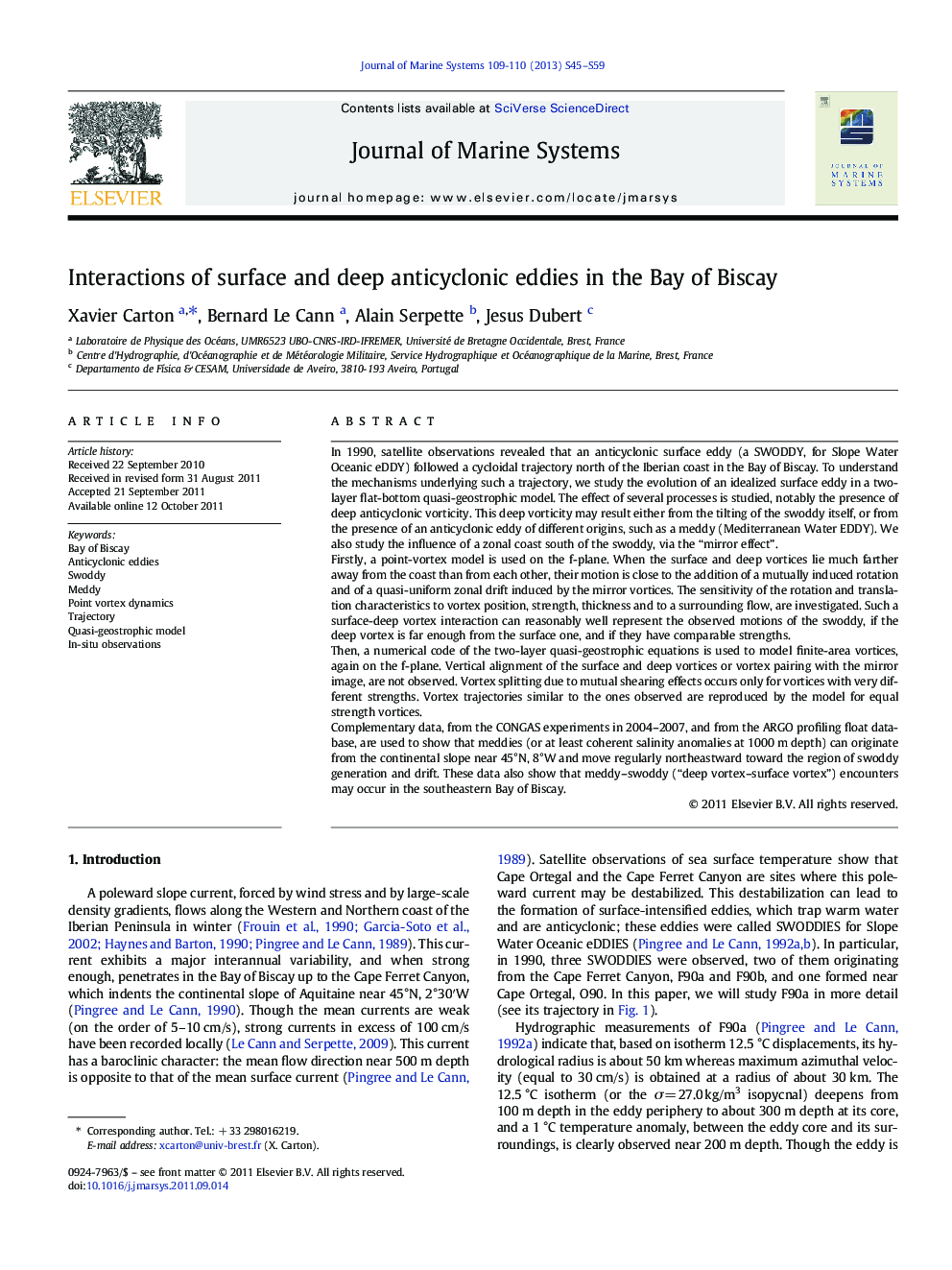| کد مقاله | کد نشریه | سال انتشار | مقاله انگلیسی | نسخه تمام متن |
|---|---|---|---|---|
| 4548195 | 1627313 | 2013 | 15 صفحه PDF | دانلود رایگان |

In 1990, satellite observations revealed that an anticyclonic surface eddy (a SWODDY, for Slope Water Oceanic eDDY) followed a cycloidal trajectory north of the Iberian coast in the Bay of Biscay. To understand the mechanisms underlying such a trajectory, we study the evolution of an idealized surface eddy in a two-layer flat-bottom quasi-geostrophic model. The effect of several processes is studied, notably the presence of deep anticyclonic vorticity. This deep vorticity may result either from the tilting of the swoddy itself, or from the presence of an anticyclonic eddy of different origins, such as a meddy (Mediterranean Water EDDY). We also study the influence of a zonal coast south of the swoddy, via the “mirror effect”.Firstly, a point-vortex model is used on the f-plane. When the surface and deep vortices lie much farther away from the coast than from each other, their motion is close to the addition of a mutually induced rotation and of a quasi-uniform zonal drift induced by the mirror vortices. The sensitivity of the rotation and translation characteristics to vortex position, strength, thickness and to a surrounding flow, are investigated. Such a surface-deep vortex interaction can reasonably well represent the observed motions of the swoddy, if the deep vortex is far enough from the surface one, and if they have comparable strengths.Then, a numerical code of the two-layer quasi-geostrophic equations is used to model finite-area vortices, again on the f-plane. Vertical alignment of the surface and deep vortices or vortex pairing with the mirror image, are not observed. Vortex splitting due to mutual shearing effects occurs only for vortices with very different strengths. Vortex trajectories similar to the ones observed are reproduced by the model for equal strength vortices.Complementary data, from the CONGAS experiments in 2004–2007, and from the ARGO profiling float database, are used to show that meddies (or at least coherent salinity anomalies at 1000 m depth) can originate from the continental slope near 45°N, 8°W and move regularly northeastward toward the region of swoddy generation and drift. These data also show that meddy–swoddy (“deep vortex–surface vortex”) encounters may occur in the southeastern Bay of Biscay.
Journal: Journal of Marine Systems - Volumes 109–110, Supplement, January 2013, Pages S45–S59